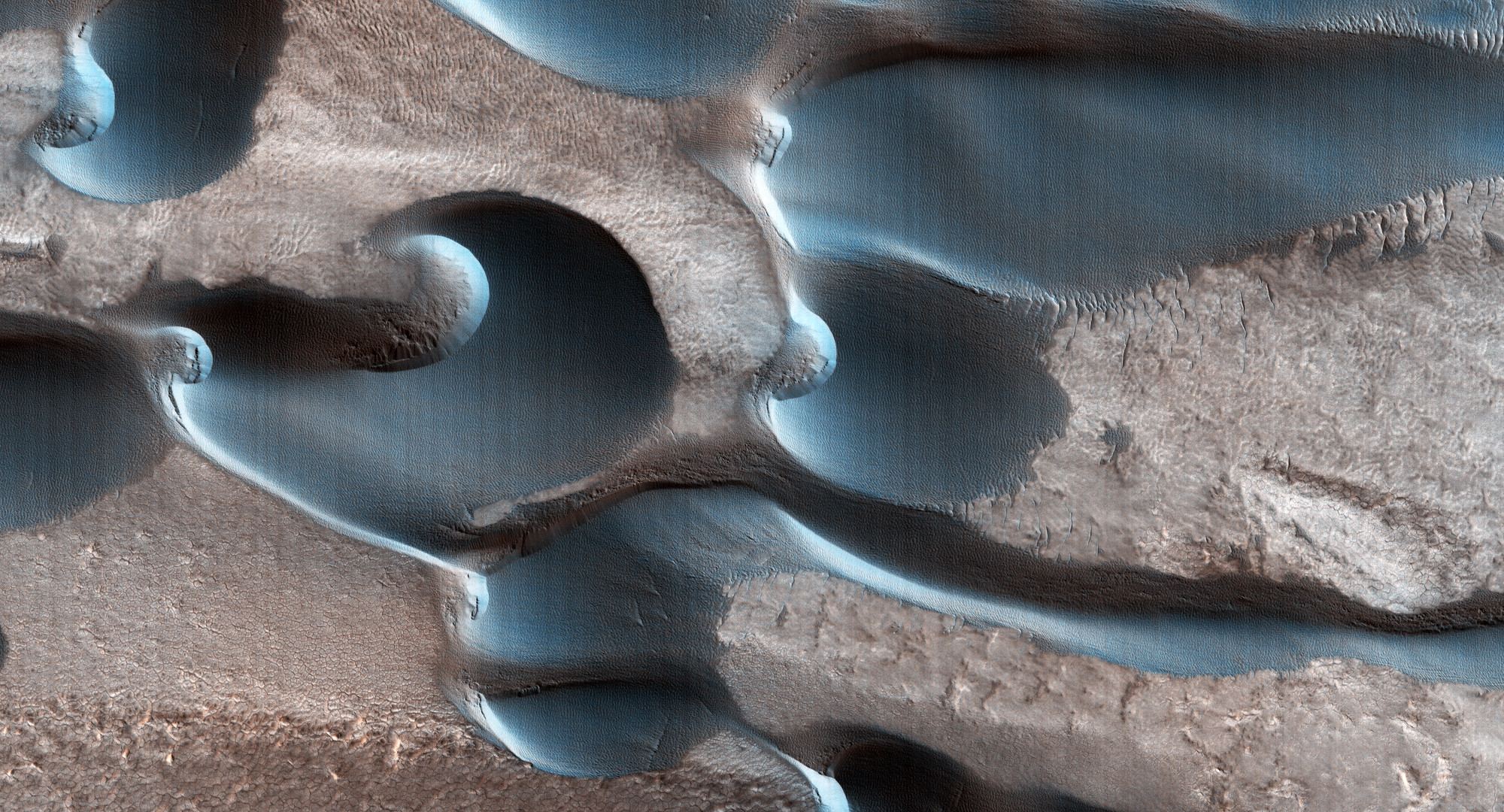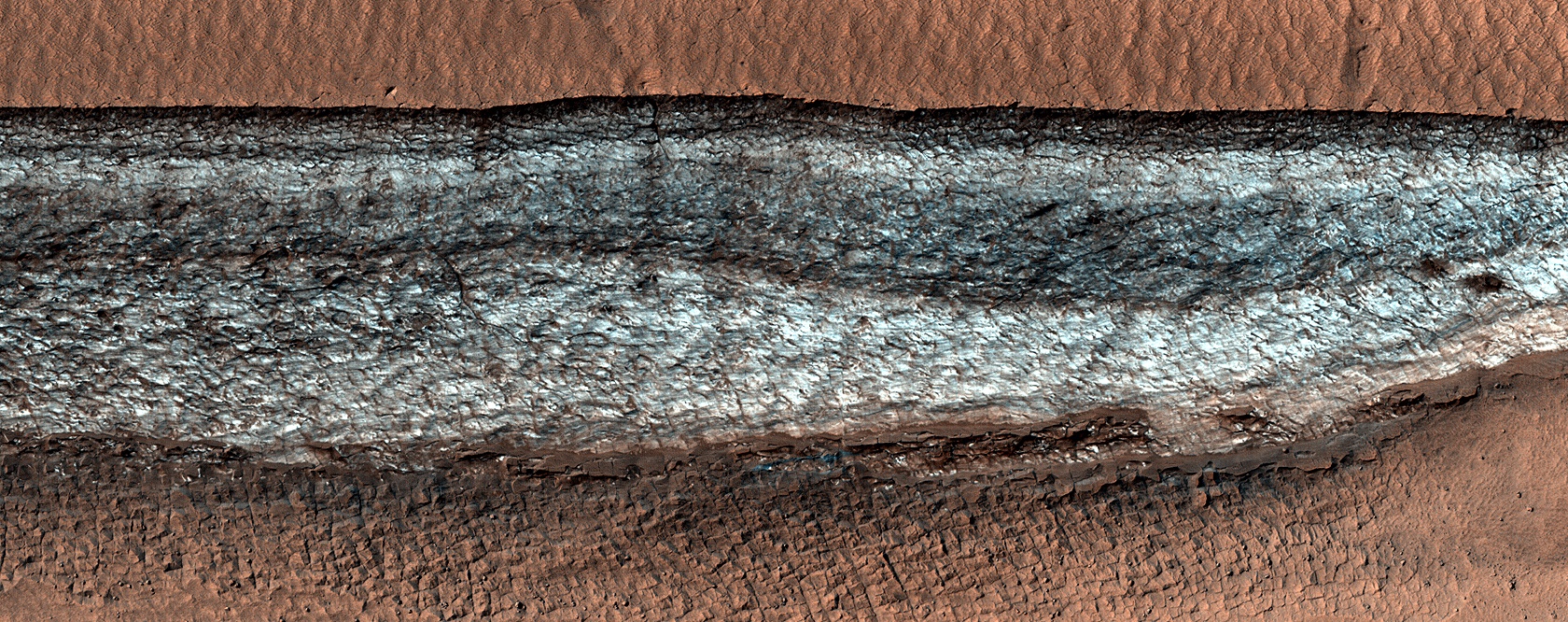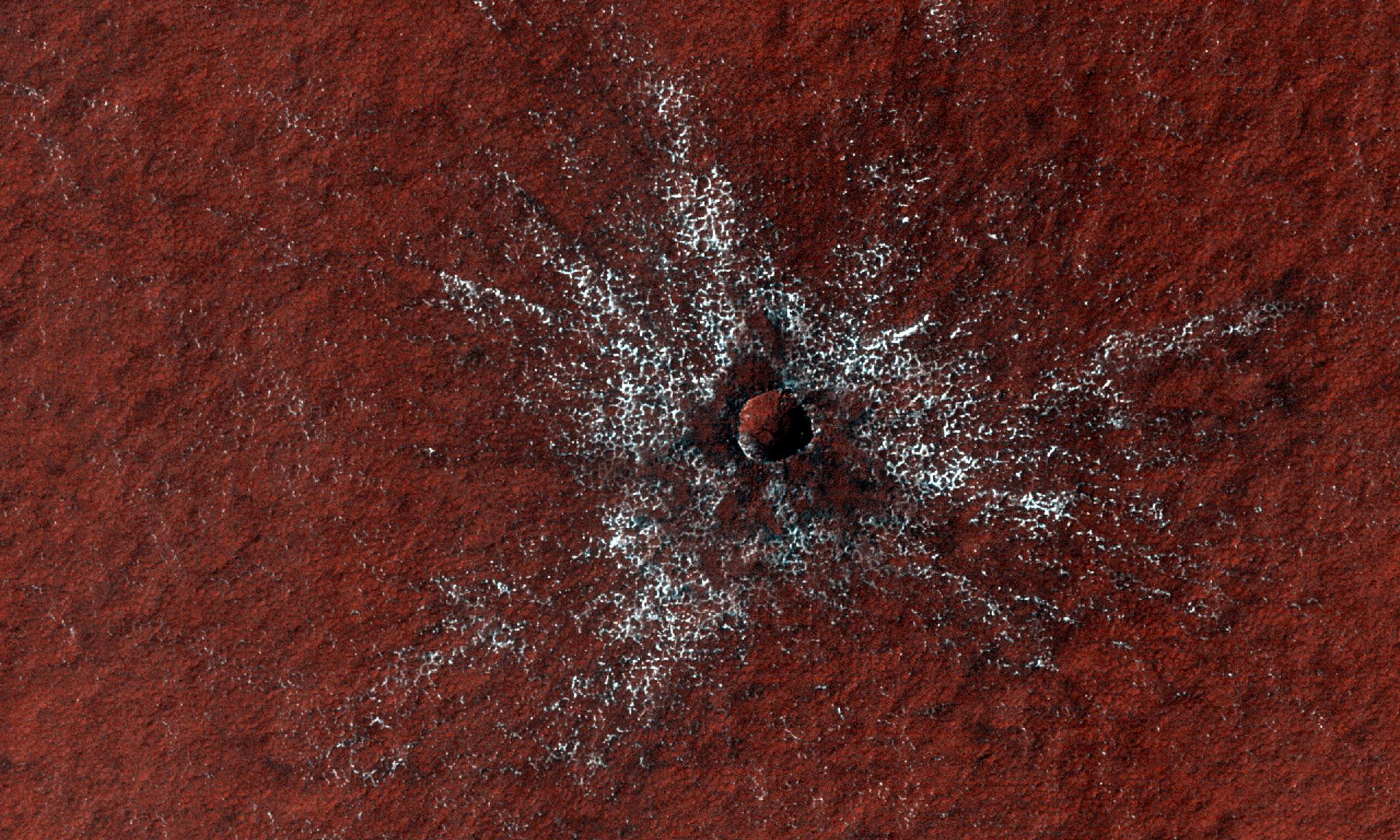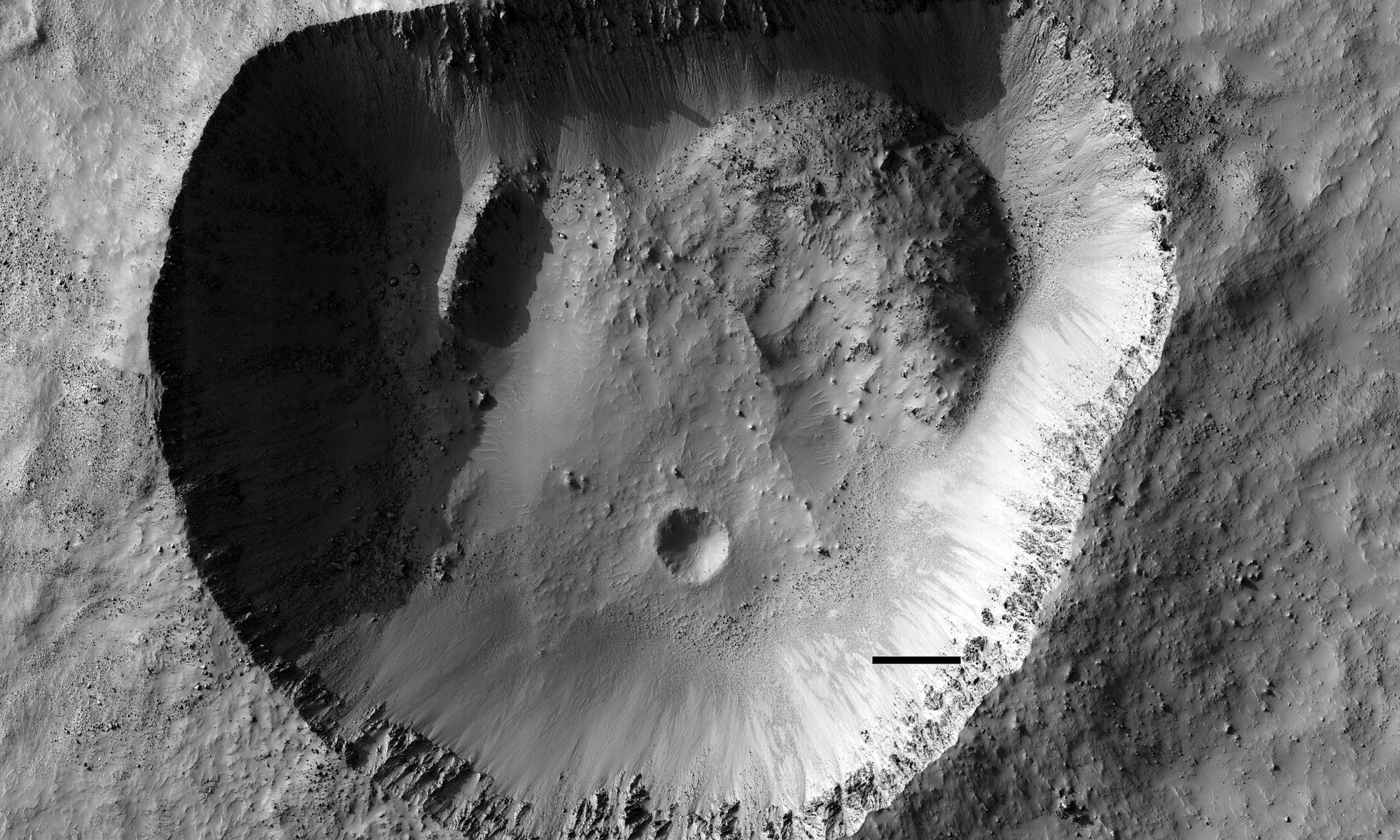This interesting image from the HiRISE camera on the Mars Reconnaissance Orbiter shows a field of fascinating dunes called barchan dunes. These dunes have formed along a cliff in Chasma Boreale, in the North Pole of Mars.
Continue reading “Beautiful Dunes on Mars, Sculpted by Swirling Winds”This Ice Cliff is One of the Few Places With Exposed Water ice in the Mid-Latitudes on Mars. It’s Probably Tens of Millions of Years old
Because of the orbiters and landers that have studied Mars over the years, scientists have learned that water ice is very likely locked away just under the surface throughout the planet’s mid-latitudes. These regions – especially in the northern hemisphere — are mostly covered with smooth material and scientists suspect ice is just underneath.
But sometimes, images like this give one from the HiRISE (High Resolution Imaging Science Experiment) camera on the Mars Reconnaissance Orbiter, provides a glimpse of the ice that might be buried below the surface. This image shows a cliff jutting out of the normally smooth terrain, and the cliff is covered with bright ice.
Continue reading “This Ice Cliff is One of the Few Places With Exposed Water ice in the Mid-Latitudes on Mars. It’s Probably Tens of Millions of Years old”The Tharsis Region of Mars is Peppered With These Strange Pit Craters. Now They’ve Been Found Elsewhere
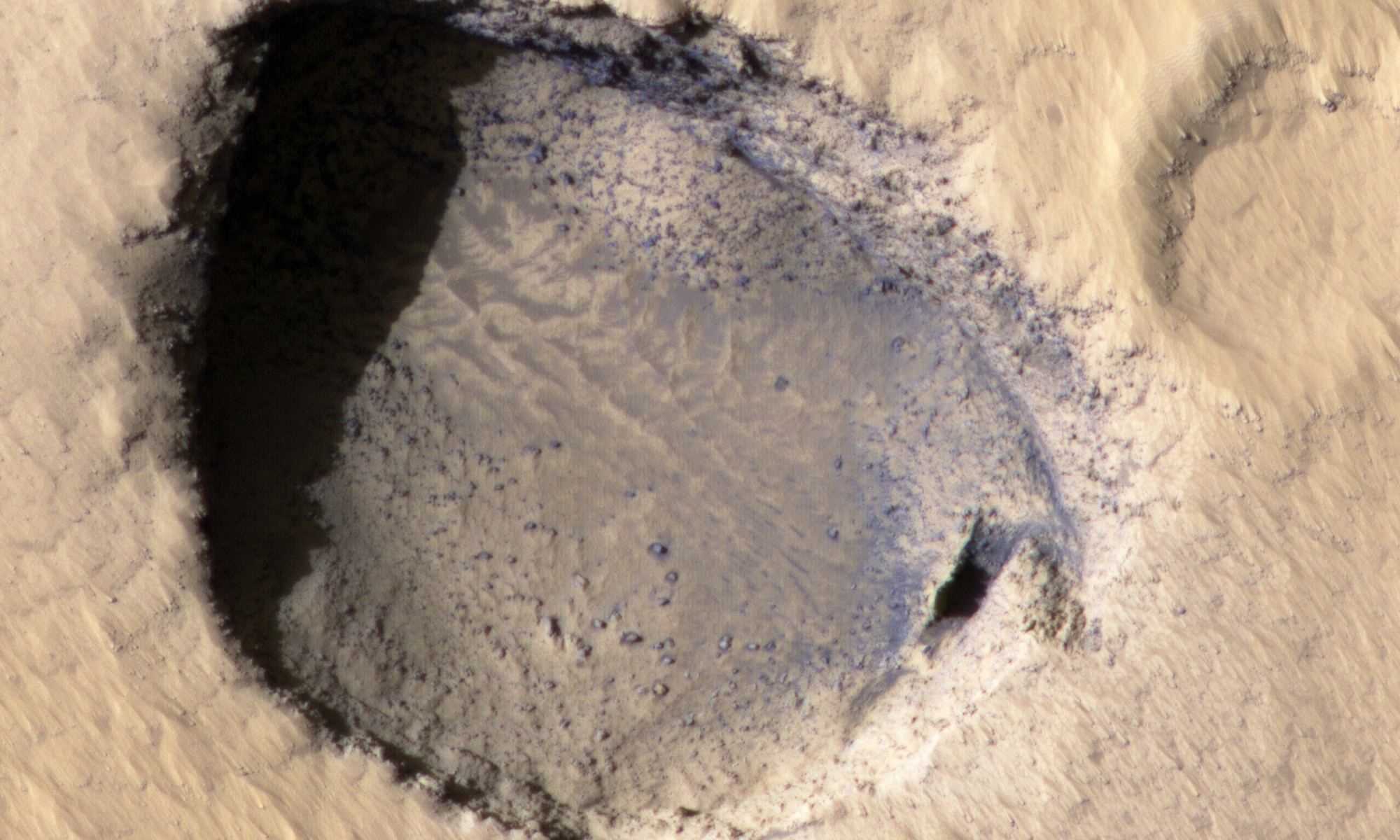
Pit craters are found on solid bodies throughout our Solar System, including Earth, Venus, the Moon, and Mars. These craters – which are not formed by impacts — can be indications of underground lava tubes, which are created when the top of a stream of molten rock solidifies and the lava inside drains away, leaving a hollow tube of rock. If a portion of the roof of the tube is unsupported, parts of it may fall in, making a hole or a pit along the lava tube’s path.
Continue reading “The Tharsis Region of Mars is Peppered With These Strange Pit Craters. Now They’ve Been Found Elsewhere”A New Map of Mars, Made From 51,000 Orbital Images

When NASA sent the Mars Reconnaissance Orbiter (MRO) to the red planet in 2006, the spacecraft took an instrument with it called CRISM—Compact Reconnaissance Imaging Spectrometer for Mars. CRISM’s job is to produce maps of Mars’ surface mineralogy. It’s been an enormous success, but unfortunately, the loss of its last cryocooler in 2017 means the spectrometer can only undertake limited observations.
But CRISM is going out with a bang, creating one final image of the surface of Mars that NASA will release in batches over the next six months.
Continue reading “A New Map of Mars, Made From 51,000 Orbital Images”This Bizarre Terrain on Mars is Caused by Water Ice and Carbon Dioxide
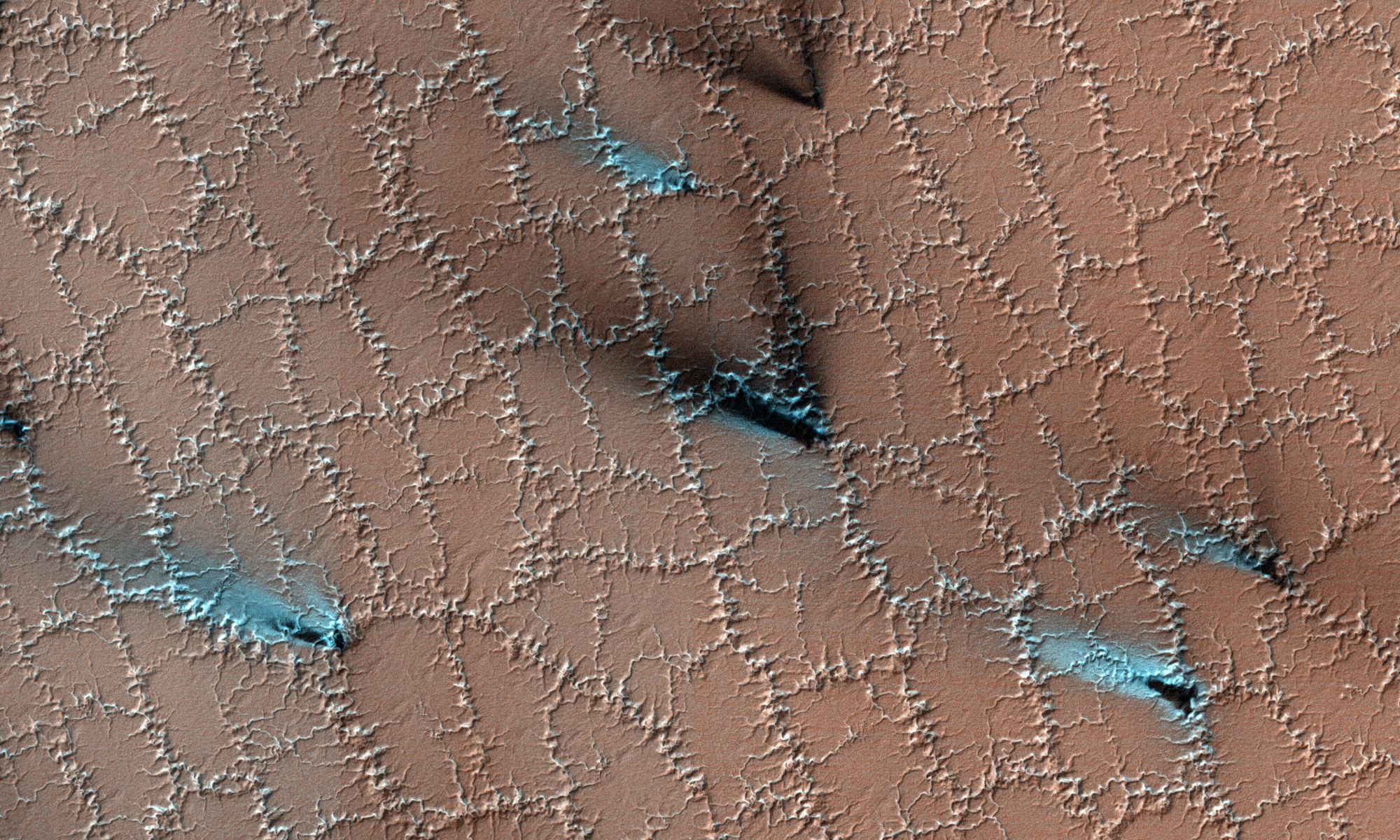
From orbit, this landscape on Mars looks like a lacy honeycomb or a spider web. But the unusual polygon-shaped features aren’t created by Martian bees or spiders; they are actually formed from a ongoing process of seasonal change from created from water ice and carbon dioxide.
Continue reading “This Bizarre Terrain on Mars is Caused by Water Ice and Carbon Dioxide”This Crater on Mars is Just a Couple of Years Old
Changes are always taking place on Mars, from factors like seasonal variations and wind. But there’s one other aspect that changes the surface of Mar quite often: impacts.
Here’s a new impact crater that was seen by the Mars Reconnaissance Orbiter. Exactly when the crater formed is not known, but this image was taken on July 24, 2020 and in a previous image of this site taken in 2018, the crater is not there.
Continue reading “This Crater on Mars is Just a Couple of Years Old”Eight Missions are Getting Extensions, Most Exciting: OSIRIS-REx is Going to Asteroid Apophis

NASA has granted mission extensions to eight different planetary missions, citing the continued excellent operations of the spacecraft, but more importantly, the sustained scientific productivity of these missions, “and the potential to deepen our knowledge and understanding of the solar system and beyond.” Each mission will be extended for three more years.
One of the most exciting extensions gives a new mission to the OSIRIS-REx spacecraft, sending it to one of the most infamous asteroids of them all, the potentially hazardous asteroid Apophis.
Continue reading “Eight Missions are Getting Extensions, Most Exciting: OSIRIS-REx is Going to Asteroid Apophis”Here’s Something Rare: a Martian Crater That isn’t a Circle. What Happened?
Most impact craters are usually circular and fairly symmetric, but not all. This odd-shaped crater on Mars is obviously an impact crater, but it has a unique oblong shape. What happened?
Continue reading “Here’s Something Rare: a Martian Crater That isn’t a Circle. What Happened?”Perseverance Finally Spots its Own Parachute on the Surface of Mars

More than 13 months after the Perseverance rover landed on Mars (on February 18, 2021), the rover’s cameras have finally spotted some of the parts of the Mars 2020 landing system that got the rover safely to the ground. The parachute and backshell were imaged by Perseverance’s MastCam-Z, seen off in the distance, just south of the rover’s current location. The image was taken on Sol 404, or April 6, 2022 on Earth.
Continue reading “Perseverance Finally Spots its Own Parachute on the Surface of Mars”What a Feat! Ingenuity Photographed From Space
It seems like only months ago that the Perseverance Rover landed in Jezero Crater on Mars. But in fact, it’s been there longer than a year. Perseverance has had company during this time; its sidekick, the Ingenuity helicopter, completed 23 flights in Mars’ thin atmosphere so far.
The HiRISE camera on the MRO has captured an image of the rover and the tiny helicopter on Mars as it rests on the surface.
Continue reading “What a Feat! Ingenuity Photographed From Space”
